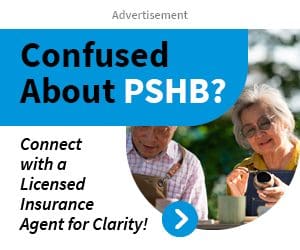Key Takeaways
-
The 2025 Postal Service Health Benefits (PSHB) changes are set to improve access to healthcare for USPS employees and retirees nationwide.
-
Key updates include tailored plan options, better Medicare coordination, and expanded coverage to meet diverse needs.
Why the 2025 Changes Matter
The new Postal Service Health Benefits (PSHB) program, set to launch in January 2025, represents one of the most transformative changes in healthcare for USPS employees and retirees. It replaces the Federal Employees Health Benefits (FEHB) program and introduces a healthcare system specifically designed for the postal workforce. The goal? To improve access to care, reduce costs, and provide more personalized options for you and your family.
These updates aren’t just about fixing a few inefficiencies; they’re about building a better system from the ground up. Let’s take a closer look at how these changes could benefit you and why preparation is key.
What’s New with PSHB?
The PSHB program is a significant departure from the old FEHB system. It’s designed with USPS employees and retirees in mind, offering plans that better fit the unique needs of the postal community.
-
Exclusive Eligibility: PSHB is only available to USPS employees, retirees, and their families, making it a more focused program.
-
Medicare Integration: A major update includes mandatory enrollment in Medicare Part B for eligible retirees, ensuring comprehensive coverage.
-
Custom Plans: The new program offers options tailored to the healthcare requirements of postal workers, emphasizing affordability and accessibility.
These changes aim to address gaps in the previous system while improving access to care for everyone involved.
Open Season: Your Opportunity to Make the Right Choice
Open Season, running from November 11 to December 9, 2024, is your chance to evaluate your options and select the best plan for you and your family. Even if you’re automatically enrolled in a PSHB plan that corresponds to your current FEHB coverage, this period allows you to:
-
Compare Plans: Look at what’s available and see if there’s a plan that better fits your needs.
-
Update Your Information: Life changes like marriage, divorce, or new dependents make Open Season the perfect time to adjust your coverage.
-
Review Costs: Premiums, deductibles, and out-of-pocket maximums vary between plans. Open Season lets you find the right balance for your budget.
Action Step:
Use this time to thoroughly review your options and ensure your plan aligns with your current and future healthcare needs.
Medicare Integration: A Vital Update for Retirees
For retirees, Medicare integration is one of the most impactful aspects of the new PSHB program. Here’s what you need to know:
Who Needs Medicare Part B?
-
Mandatory Enrollment: If you’re retiring after January 1, 2025, and eligible for Medicare, you’ll need to enroll in Part B to maintain PSHB coverage.
-
Exemptions: Retirees who left USPS before this date and are not already enrolled in Medicare Part B are exempt. However, voluntary enrollment can still enhance their benefits.
Why Integration Matters:
-
Comprehensive Coverage: By combining Medicare Part B with PSHB, you get more robust coverage with fewer gaps.
-
Reduced Costs: The integration minimizes out-of-pocket expenses for medical services like doctor visits and outpatient care.
Important Deadlines:
If you’re approaching 65, remember to enroll in Medicare during your Initial Enrollment Period (three months before and after your 65th birthday) to avoid penalties.
Anticipating Healthcare Costs
Understanding and planning for healthcare expenses is essential under the PSHB program. Here’s what to expect:
-
Premiums: While specific costs depend on the plan, the government will continue contributing a significant portion, keeping premiums affordable for most participants.
-
Medicare Part B Costs: For those required to enroll, the standard Medicare Part B premium will be an additional expense.
-
Out-of-Pocket Costs: Each PSHB plan comes with its own deductible, copayments, and out-of-pocket maximums. Reviewing these during Open Season will help you make an informed decision.
Budgeting Tip:
Factor in both your PSHB plan costs and Medicare Part B premiums when planning your annual healthcare budget. Include a buffer for unexpected expenses to avoid financial strain.
How Active USPS Employees Can Prepare
If you’re an active USPS employee, the PSHB changes may seem less urgent, but preparing now ensures a smoother transition:
-
Automatic Enrollment: Your current FEHB plan will transfer automatically to a comparable PSHB plan, but Open Season lets you explore better options.
-
Plan for Retirement: If you’re close to retiring, familiarize yourself with Medicare Part B requirements to avoid surprises.
-
Update Your Dependents’ Information: Confirm that all eligible family members are accurately listed in your plan.
Steps for Retirees to Stay Ahead
Retirees face unique challenges with these changes, making early preparation vital. Here’s what to focus on:
-
Assess Medicare Eligibility: Confirm whether you need to enroll in Medicare Part B to maintain PSHB coverage.
-
Review New Plans: Explore available PSHB options to ensure your plan meets your health needs and fits your budget.
-
Track Key Dates: Missing enrollment deadlines for Medicare or Open Season could lead to penalties or gaps in coverage.
Proactive Planning:
Start gathering all necessary documents, including your Medicare and USPS records, to streamline the transition process. Being organized now will save you time and stress later.
Ensuring Family Coverage
Your family’s healthcare is just as important as your own. The PSHB program extends coverage to eligible dependents, including:
-
Spouses
-
Children under 26
-
Disabled Adult Dependents: Qualifying disabled dependents can also remain covered.
Checklist:
During Open Season, review your family’s eligibility and confirm that all members are properly listed in your plan to avoid interruptions in coverage.
Getting Ready for the Transition
Preparing for the PSHB rollout might seem overwhelming, but taking the right steps now can make all the difference:
-
Stay Updated: USPS will provide regular updates on the transition. Pay attention to communications about deadlines and plan details.
-
Compare Plans Thoroughly: Use Open Season to evaluate all your options, focusing on the benefits and costs that matter most to you.
-
Reach Out for Help: If you have questions, don’t hesitate to contact USPS benefits representatives or Medicare for assistance.
Final Tip:
Create a personalized checklist to track your progress during the transition, ensuring nothing falls through the cracks.
A Brighter Future for USPS Healthcare
The introduction of the PSHB program is more than just a policy change; it’s an opportunity to enhance healthcare access and affordability for USPS employees and retirees. By tailoring plans to postal workers’ needs, integrating with Medicare, and providing clear options during Open Season, the program aims to deliver better care for you and your family.
By staying informed, planning ahead, and actively participating in Open Season, you can make the most of these changes and secure a healthcare plan that works for your future.











